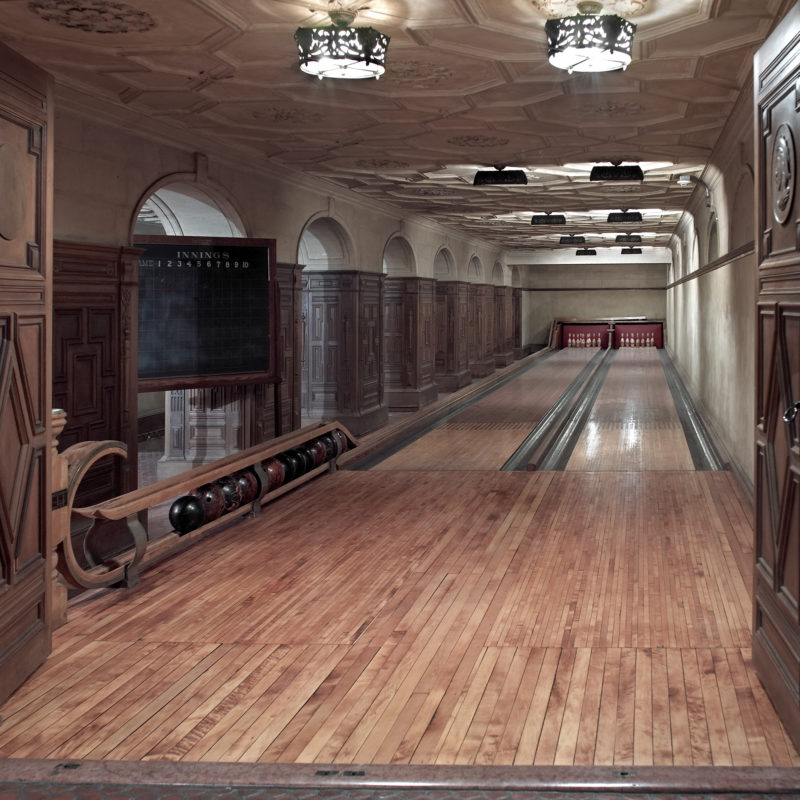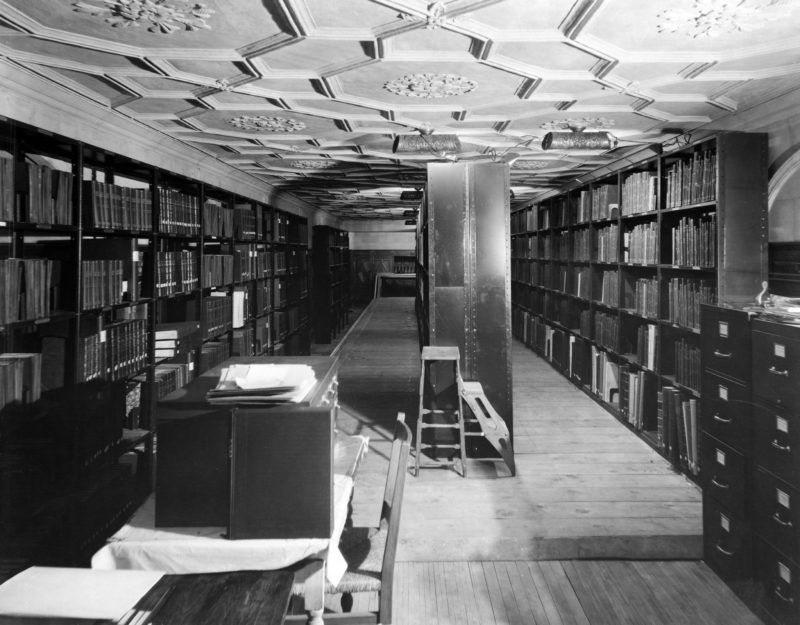13. There’s a Bowling Alley Hidden Below The Frick

@Michael Bodycomb, Courtesy of The Frick Collection
Frick’s fortune was based on innovative steel manufacturing techniques and an early prescience of the coming importance of coke, an industry that he dominated quickly and ruthlessly. He appreciated new technology in business and at home. Taking a cue from his most fashionable contemporaries who had bowling alleys, Frick commissioned a stylish subterranean bowling alley in 1916, along with a billiards table for playing billiards or pool.
Bowling had historically been partly a game of strength when the balls were made of lignum vitae, a very hard wood. But in 1905, the first rubber ball was invented, followed in 1914 by the Brunswick Corporation’s Mineralite ball, made of a “mysterious rubber compound.” Rubber balls modified the game, as did the Frick’s revolutionary ball return technology that relied on physics and gravity, and allowed players to gracefully remain where they were, rather than chasing the balls up and down the lanes. Often confused for the bowling alley in the Greystone Mansion in Beverly Hills, where There Will Be Blood was shot, the bowling alley at The Frick does feature a similar return mechanism.
Though the rubber ball helped make bowling popular with women, daughter Helen Clay Frick was not a fan. When she founded her Frick Art Reference Library, she commandeered the basement space for her books and files. Later, one of the wood-paneled walls of the bowling alley would be moved to the new Frick Art Reference Library space.

Courtesy of The Frick Collection/Frick Art Reference Library Archives
Nonetheless, in 1997 the Frick undertook a meticulous restoration of the bowling alley and billiards room, although both are now generally closed to the public due to the difficulties of access down several flights to the basement and the fact that it has only one method of egress.





